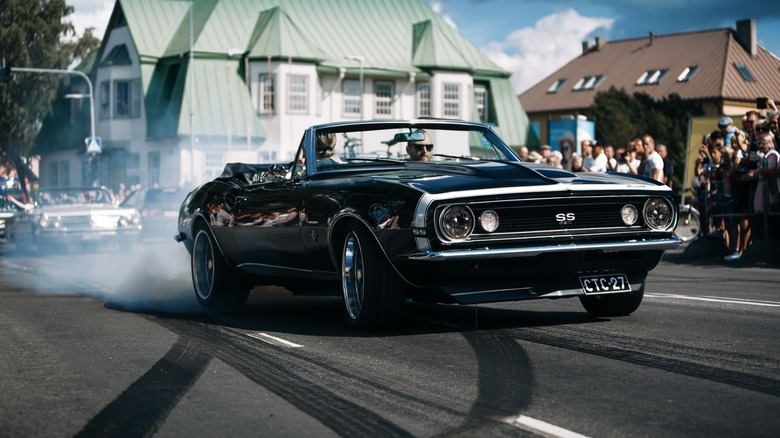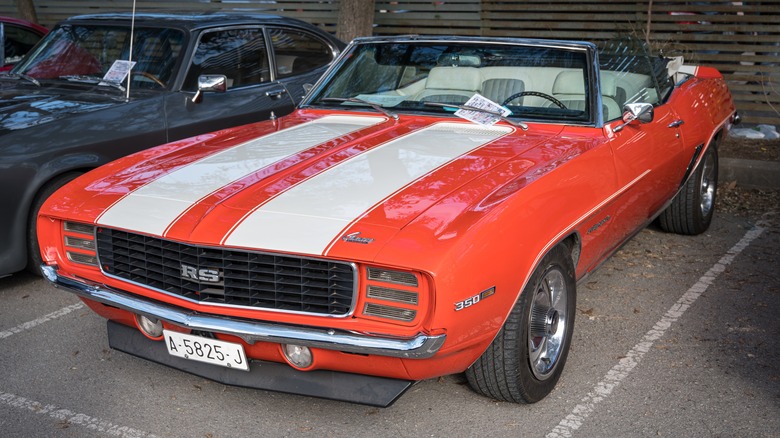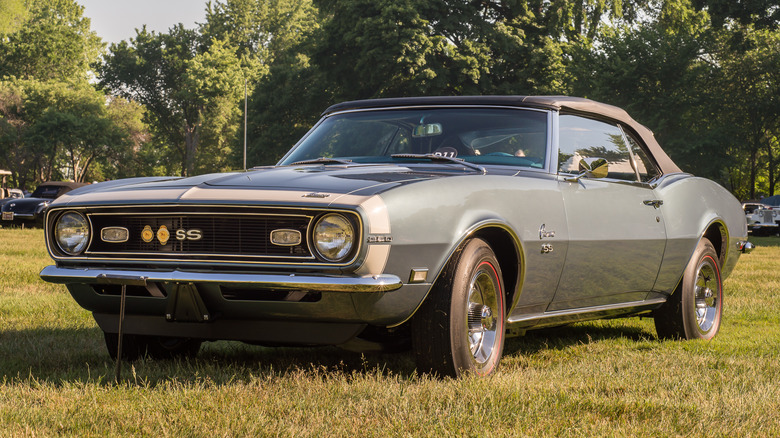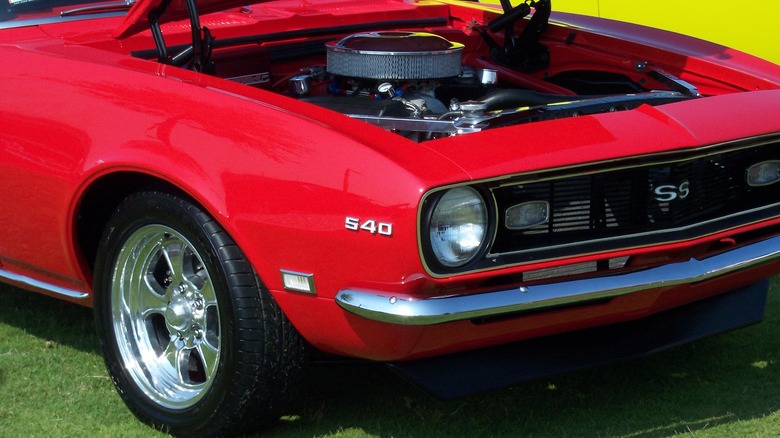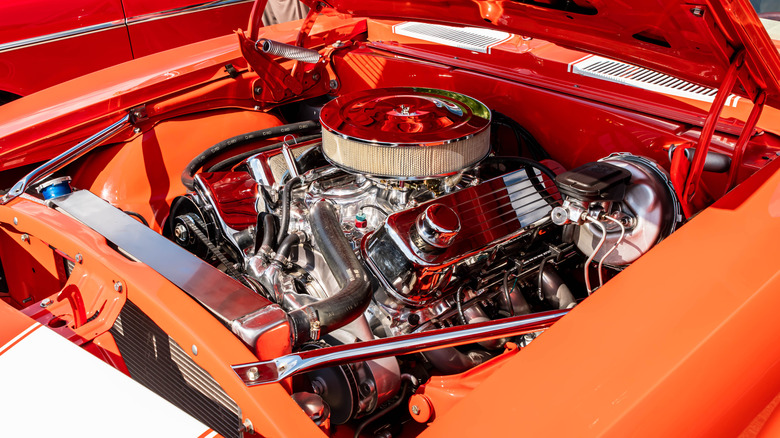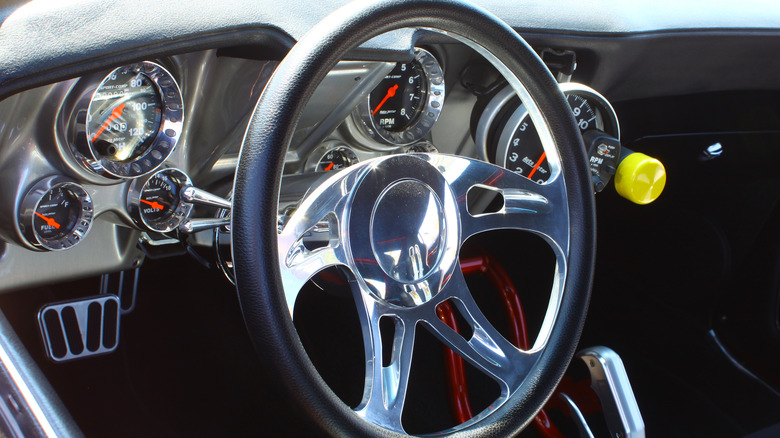5 Things To Know Before Buying A Classic Chevy Camaro
Maybe you owned a classic Chevy Camaro at an earlier stage of your life, you crave that big block power, or you've just fallen in love with the mean look of this famous muscle car. Whatever the reason, if you're thinking about going out and finding one of your own, there are a few things to know before you pull the trigger. After all, it's been almost 60 years since the original '67s first rolled off the assembly line, so you'll need to find one that's been taken care of better than most cars, and hopefully, you'll be able to find one that has low(ish) miles. Nobody says you have to get a Camaro, of course; you could also go after any of several classic Pontiac muscle cars or even a Plymouth.
Part of every successful fictitious classic car purchase story invariably involves a little old lady or man who bought it when it was new, then kept it in a garage all these years because "it was too much power for me" or "gas is just too expensive for these old cars." While this can and does happen, it's a long shot at best. Still, there are things you can learn for when you do come upon a classic Camaro that could be the difference between proudly driving it home that day or turning it away in search of a different and better diamond in the rough.
First generation Camaros from 1967 and after have the advantage of all the technological advances from the engines that came before. This means they're reliable, their electrical systems are mostly tried and true, and the engines have been refined enough to last you a long time. It's all about knowing what to look for and finding a quality Camaro that fits your budget. Here are a few things to know before buying a classic Chevy Camaro.
Pick your style
The first Camaro in 1967 was Chevrolet's answer to the Ford Mustang. As such, it had clean lines and plenty to offer under the hood. But it also had plenty you could change about the exterior and interior of the car. You had options for extra chrome on the outside, or you could opt for wooden panels in the interior. You could get the Super Sport (SS) version with the big-block engine or the Z28 performance version designed originally for racing. Make sure to research what was available at the time to find the right Camaro for you.
In '68, the Camaro had a newly redesigned interior with a center console, better armrests, different console gauge configurations, and more chrome accents. There were also a lot of cosmetic changes to the way your rear lights looked, the angle of the grill, and other design tweaks.
The '69 Camaro had some tweaks to the body design with differently styled doors, fenders, and quarter panels that gave the car a different feel than earlier models. It also came with power steering and disc brakes, which might be worth seeking out those models if you like those options. Whichever flavor of Camaro is your favorite, it's good to know what each offers before you start seriously considering buying one of these classic cars.
Kick the tires
It's a saying as old as time: "Kick the tires." But we don't really mean to just kick the tires (we're not stopping you, though!); instead, you need to do a once-over of the entire car before you make any firm decisions. One major thing to look out for is rust. It's been a long time since this classic Camaro was originally built, and you can't fully know where it's been between then and now.
As you probably already know, the elements have a way of finding their way into the dark places inside your car. Classic Camaros were built on a semi-unibody platform, so that means checking specifically where the subframe mounts to the unibody. If there's rust there, it could mean a lot of work but don't worry too much about materials. Plenty of companies still build sheet metal parts for these old cars because they are popular classics, and plenty of them are out there.
Check for (too many) modifications
On a popular classic car like the Camaro, some owners tend to go a little crazy with the modifications. One thing you'll want to check is to see if the firewall has been cut and/or modified to fit a bigger engine. Camaros were used a lot as drag racers, and if a previous owner modified the firewall to house a larger engine, it means the body probably doesn't have the proper modifications to support all that extra weight, which could possibly damage the frame of the car.
In other words, if the car has a boatload of modifications, you'll probably want to turn away. As we mentioned, rust is always a problem, but you'll also want to search for fiberglass "spot fixes" or too many tangles of wires for mods. The more it's been "decked out" by previous owners, the more that things can go wrong. It might be fun for a while, but working on the car (for you or a mechanic) will become a much more complex headache than it's worth.
What's it packing?
The different models of Classic Camaros from the late '60s era of cars come with slightly different body types and extras, but it's important to note what kind of engine is in your prospective Camaro now. The classics had options for inline six-cylinder engines, 327-cubic-inch small-block V8s, a 302 small-block (made for the Camaro Z28), and even a 396 big-block V8. You also had the option for a manual or automatic transmission.
It's important to make sure you know what you have under the hood because it could mean the difference between a good-looking commuter car and a gas-guzzling powerhouse. There are good reasons for both, and nobody is judging you, but if you were hoping to show off with a burnout and really feel the power of the bigger engines, you're going to want to lean in that direction. If it doesn't matter, Chevy's inline six-cylinder engines were tried and true, so they shouldn't give you too much trouble as long as they were maintained correctly and you continue to maintain them.
Check for extra factory options
Even though it was the late '60s, there were plenty of options available in these older cars that mostly matched the amenities we're used to today. You could have air conditioning, a few different dashboard radio options, power windows, rear-window defoggers, and more. You could also have things like cruise control, tinted windows, and a fold-down rear seat for more storage space. It's important to look at the prospective Camaro to see what the particular model came with, what was added, and what still works.
Camaros also had a lot of exterior options to give a specific model a different feel. You could opt for regular or reduced-glare chrome or switch in a vinyl top, and some models came with custom SS design elements and other sought-after details. It's a good idea when investing in a classic Camaro to know exactly what you're getting with each model of the car and what was included (or not included) from the outset.
